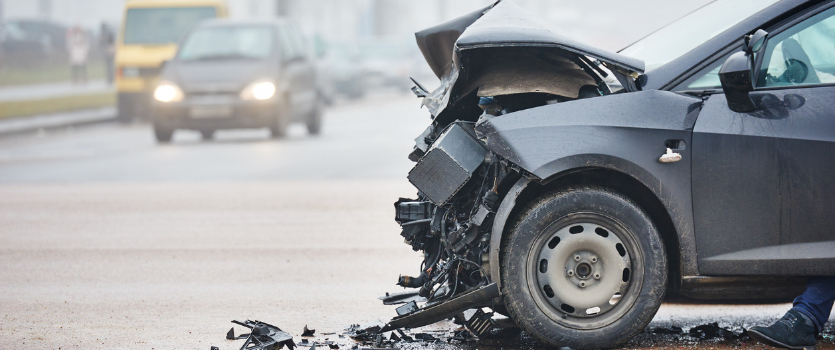On average, there are approximately 6 million collisions on U.S. motorways every year. The factors leading to an accident aren't always clear. There will often be questions about the cause of a collision and who is at fault.
To get to the bottom of some of the more complicated cases, an accident reconstruction may be needed to examine the crash site for any clues that went unseen during the police accident investigation. An accident reconstruction expert can help determine liability if the incident leads to court.
What is accident reconstruction?
Accident reconstruction definition: An auto accident reconstruction is conducted by a professional who uses cutting-edge tools and scientific accident reconstruction techniques to answer questions around why a collision occurred. Either a police accident reconstruction or a third-party crash reconstruction can help determine cause and liability.
To create an accurate reconstruction, evidence such as the final resting position of the vehicle(s) involved, damage to vehicles and property, footage of the incident, as well as tangible pieces of evidence left at the scene are all taken into account.
Accident reconstruction teams have the tools and expertise to survey an accident site and have it cleared in a timely manner. Many of these teams have equipment that can create a 3D rendering of the scene to easily reference and search for clues.
Determining a proper accident reconstruction starts with information gathering - pulling together any information that can be used as evidence, video from inside or outside the vehicles, final resting position of the vehicle(s), tire marks, and any other pieces of information that can help piece together what really happened. Accident reconstruction experts can then write reports that attest to the speed, damage, and the drivers’ actions involved in the collision.
When is accident reconstruction necessary?
Accident reconstruction is only necessary following a traffic collision. What is a traffic collision? Simply put, it's any accident that involves an automobile with either another automobile, pedestrian, or property. When the fault is difficult to determine or the accident causes bodily harm, then a court case with a personal injury lawyer may be in order.
When a lawsuit occurs because of the accident, it's up to the plaintiff to prove that the other party—the defendant—is the one responsible for the wreck and any damages.
Accident reconstruction can play a significant part in figuring out who is ultimately liable for the accident. In a court, the judge and jury will need all the information available to accurately determine who is at fault. The accident reconstruction can provide that clarity.
For example, forensic analysis can pinpoint the negligent factors, whether they stem from a driver's aggressive behavior, faulty equipment, impaired road conditions, or simple carelessness that results in a traffic collision.
In a personal injury case, a lawyer might need to rely on an accident reconstruction expert to either help prove their client’s innocence in a traffic collision or to receive the proper compensation that the client is entitled to. Otherwise, the attorney would need to depend on eye-witness testimony, which has been proven to be unreliable.
What are the tools & requirements needed for accident reconstruction?
The best accident reconstruction experts possess experience with and knowledge of investigation, physics, and law enforcement. This background helps qualify them as expert witnesses in court.
They also create computer-generated 3D animations to show jurors how they've come to their conclusions regarding the accident. The animations can walk jurors through a three-dimensional environment, plainly showing them what factors resulted in the collision. These facts can often help demonstrate that an accident occurred due to excessive speeds, vehicle dynamics, powertrain failure, pedestrian negligence, roadway designs, and more.
Accident reconstruction analysts will also rely on Crash Data Retrieval (CDR) systems that are pulled from an event data recorder (EDR). EDRs are oftentimes referred to as a “black box.” The EDR can usually be found within the car or truck airbag control module and will contain valuable information about a driver’s actions concerning the use of safety measures, brakes, and speed.
Tractor-trailer accident reconstruction
Commercial vehicles, such as tractor-trailers, bring another level of complexity to an accident. Due to the multitude of variables in shape, weight, and design of tractor-trailers, determining the factors that lead to a crash is significantly more difficult than dealing with a standard passenger car or truck. The risk of having a severe accident is exponentially higher for commercial vehicles.
A commercial vehicle’s black box usually records more complex data, as any court case will take into account a driver’s log audits, driver history, and training. With the additional features found in a commercial vehicle’s EDR, more specialized technicians are required to extract pertinent data.
Video as a witness
Video taken by onboard cameras can also play a vital role in accident reconstruction. When eyewitness accounts and vehicle data can give you part of the story, video can be an unbiased resource to replay what really happened in the event of a collision.
Learn more about getting reliable video evidence with Lytx fleet dash cams in a custom demo. Book time with an expert today.
